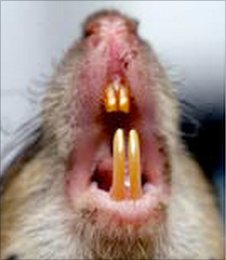It is often said that the first line of attack is defence. When businesses involving aviaries, catering, farming, food production and distribution, shipping and zoos are at stake, the first common sense step towards rat control is prevention rather than cure. When working in any of these types of businesses, rat control is likely to be included in your health and safety policy. However, besides obvious health and safety issues that rats create, they also cost businesses in loss and wastage. Use of high caliber rat bait is a great secret weapon in your war on rats and other vermin, long before you are obliged to take knee jerk action when spotting unwelcome signs that they might be at large on your premises.
Naturally, your adherence to expected standards of hygiene is your first necessary step towards preventative rat control. Feed on farms, food and waste products should not be left lying around, offering open invitations to scavenging rats. If your premises is surrounded by fields or waste ground, do your best to keep your surrounding areas clean and tidy. Any scrap metal or old machinery should be put in to storage away from any of your buildings that provide potential sources of food and water to rats.
Even if you have never suffered rat problems, it happens to thousands of others in similar lines of business, and it can happen to you at any time. Keep a close eye on dark and little used corners, in roof spaces, in storage boxes containing old paperwork, and in wall cavities. Rat bait can be used in all of these areas, plus many, many more in order to deter rats from attempting to infiltrate your premises, and eliminating any that do.
However, should you spot any rat droppings; you need to be ready and able to switch in to comprehensive rat control mode quickly and effectively. If allowed to take hold, rats congregate in nests of between 300 – 1000. Failure to eradicate the first wave with hard working rat bait could cause you a multitude of problems that probably make you cringe at the very thought. Follow the trails to try to ascertain where they are gaining access from and might be setting up home. Place wrapped parcels of rat bait on their trails and in other relevant spots, including high places if you suspect you might being playing unwilling host to roof rats.
Ratblitz is multipurpose rat bait that is most commonly used on farms and at other food related businesses, whilst also being available for domestic usage. It was formulated, and continues to be manufactured to this very day, by Ruth Consolidated Industries Pty Ltd in Sydney Australia. It is accompanied by comprehensive instructions and complies with rules laid down by the Australian Government in relation to rat control and the control of other vermin.


 Thursday, 27 October 2011
Thursday, 27 October 2011




